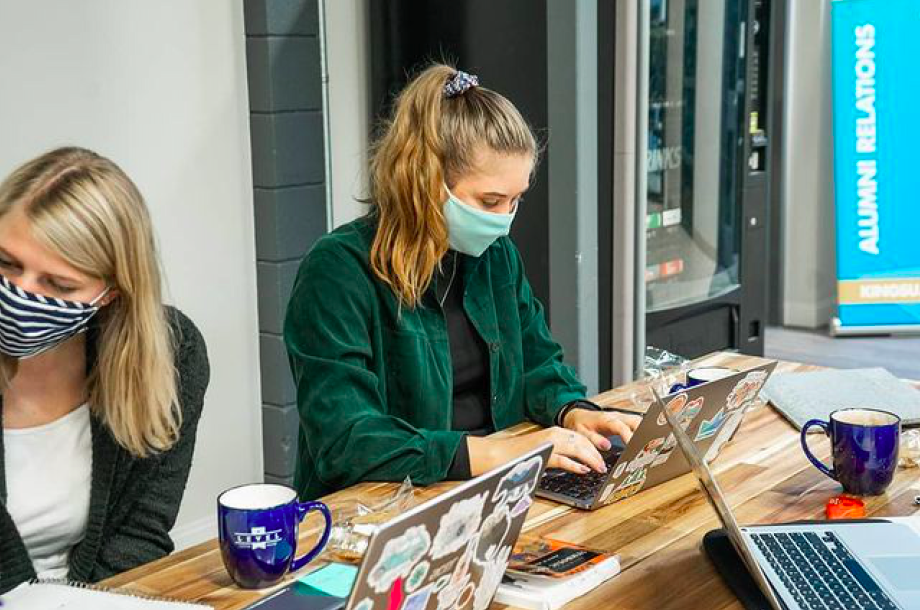Back to Campus - and Back to Normal?
The 2020/21 academic year was unlike any preceding year at King’s. The same will certainly be true of the 2021/22 year, as new health and safety measures have added complexity to the return to campus. On September 15, the Alberta government announced restrictions that affected universities across the province. As a result, King’s has implemented the Restrictions Exemption Program, limiting in-person attendance to those who are vaccinated or provide proof of a negative COVID test.
To return to in-person classes, King’s students must wear masks and provide proof of vaccination or a negative COVID-19 test. (Image: Instagram@thekingsu)
Last year, a common mantra was: “Once there’s a vaccine, things will go back to normal.” But now that almost 90% of the King’s student body is vaccinated, the validity of this statement has been called into question - although we are meeting in person once again, things are still far from “normal.” However, is “normal” really something worth aspiring for? How ought the post-pandemic university differ from the pre-pandemic university? What have we as an academic community learning throughout the duration of COVID-19, and how will that change how we “do” university?
Pre-pandemic, some aspects of the university were undeniably problematic. In a study recently published by the British Education Research Association (BERA), both students and university faculty across Canada recognized that “the pre-pandemic ‘normal’ wasn’t optimal” for them. In many ways, COVID-19 exposed the inadequacies of the traditional university system. Although students may have been able to attend their classes mask-less and in-person, they also faced challenges such as outdated technology, inaccessibility for students with learning differences, inadequate access to online resources, strict deadlines, and insufficient student support. Is this the sort of institution we should be rebuilding and returning to?
“This past year left an indelible mark. I expect that the technologies we adopted and the skills we learned will continue to inform our planning as a university going forward. From technology-enriched in-person classes, hybrid to fully online, this past year opens doors for extending the reach of the King’s mission in new and creative ways.”
Dr. Melanie Humphreys, President of The King’s University
In University Affairs, Andre Costopoulos (University of Alberta Dean of Students) argues that the pandemic has presented students and faculty alike with “a unique opportunity to reimagine our universities as more inclusive, more flexible, and ultimately more intellectually productive learning commons. Some of the ways in which we were organized pre-pandemic and some of what we did as teachers and researchers still make sense, but some don’t.” Thus, Costopoulos argues, “the pandemic has shown students and everyone else that flexibility is not only possible, but viable, and even necessary.”
As we navigate our way through the final stages of the pandemic, students aren’t hoping for a return to “normal.” Instead, we are hoping “for increasing innovation in teaching and learning, better support from institutions for both students and faculty, greater flexibility, more compassion, and an increased focus on equity within the educational system” (BERA).
This fall, rather than hoping for a return to “normal,” let us as an academic community instead hope, aspire, and work towards better.


